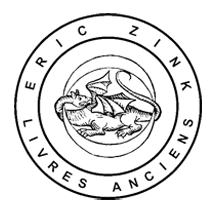

PLEMPIUS, Ophthalmographia sive tractatio de oculi, 1632

PLEMPIUS, Vopiscus Fortunatus.
Ophthalmographia sive tractatio de oculi fabrica, actione, & usu praeter vulgatas hactenus philosophorum ac medicorum opiniones.
Amsterdam, Henrici Laurentii, 1632.
Two works in one 4to (190x150 mm), (20)-340-(2)-(2bl.) / (8)-70-(1) pages. binding : Contemporary full vellum, flat spine. Wormholes in margins becoming more important at the end of the volume.

The rare first edition of a groundbreaking work in ophthalmology.
In this seminal work, Plempius applied the principle of the camera obscura to explain the functioning of the human eye.
At the time, the camera obscura was a popular novelty used for both entertainment and scientific exploration. Notably, Kepler employed it for astronomical measurements in the early 17th century.
Plempius made significant contributions to the field of ophthalmology. He was here the first to describe the six muscles of the eye, the shape of the lens, and the muscular cause of strabismus.
Bound with :
NAALDWYCK, Libri duo Philippicorum sive de Equorum natura, electione, educatione, disciplinâ & curatione. Lugduni
Batavorum, Clouquin, [1631]. First edition.
Rare book on hippologia and the care of horses.
It was considered to be one of the first scientific books on horses, based on own experiences and therapies, combined with information from ancient authors.
references: Vanagt, K. [in. Early Modern Medical Thinking on Vision and the Camera Obscura. V.F. Plempius’ Ophthalmographia (2021) : "[...]by introducing the camera obscura as an explanatory model for the functioning of the eye, V.F. Plempius’s aim was to resolve an ongoing debate, in a spectacular and original way. He borrowed the innovations and experiments of other fields of knowledge, but looked at them as a medical doctor: by analysing the relevance of the camera for medical thinking he was able to give such innovations a new meaning."], Albert-Norton-Hurtes [Source book of Ophthalmology, 1816 : "Although there is little in the way of new research in this wirk, Plemp was the first to espouse the then-controversial optical theories of Kepler, originally announced nearly twenty years previously. Plemp also speculated the clouding of the lens might be cause of cataracts but he proceeded no further with this idea. "].
Sold












